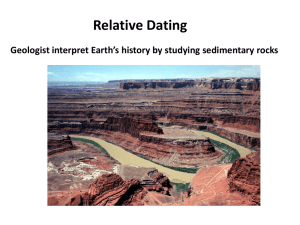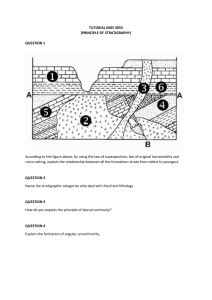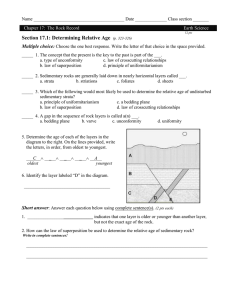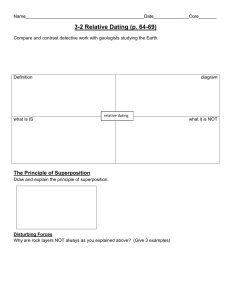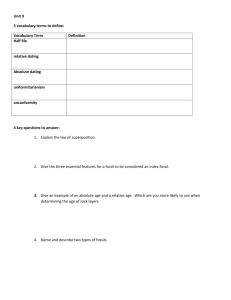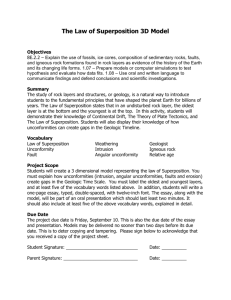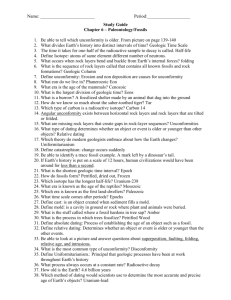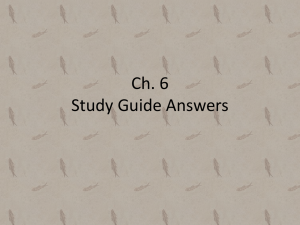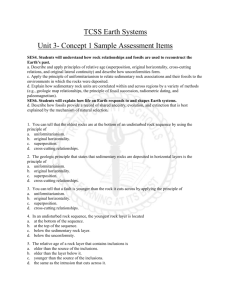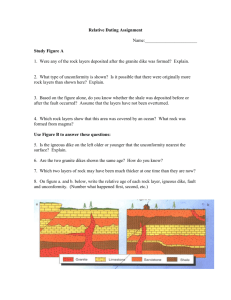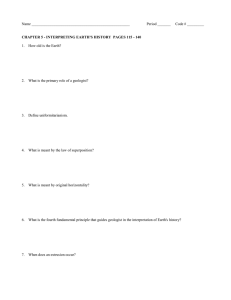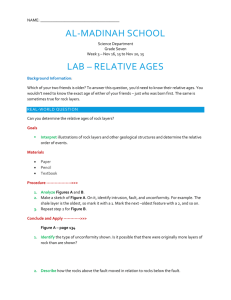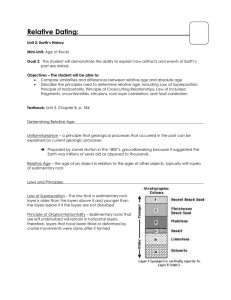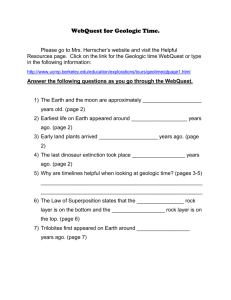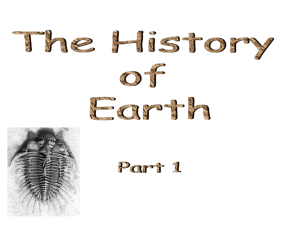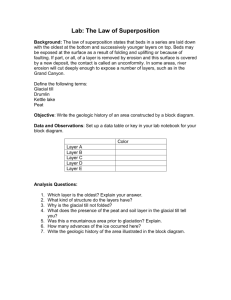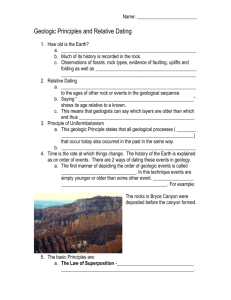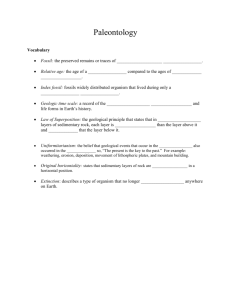Ch 12 Review KEY-Geologic Time
advertisement
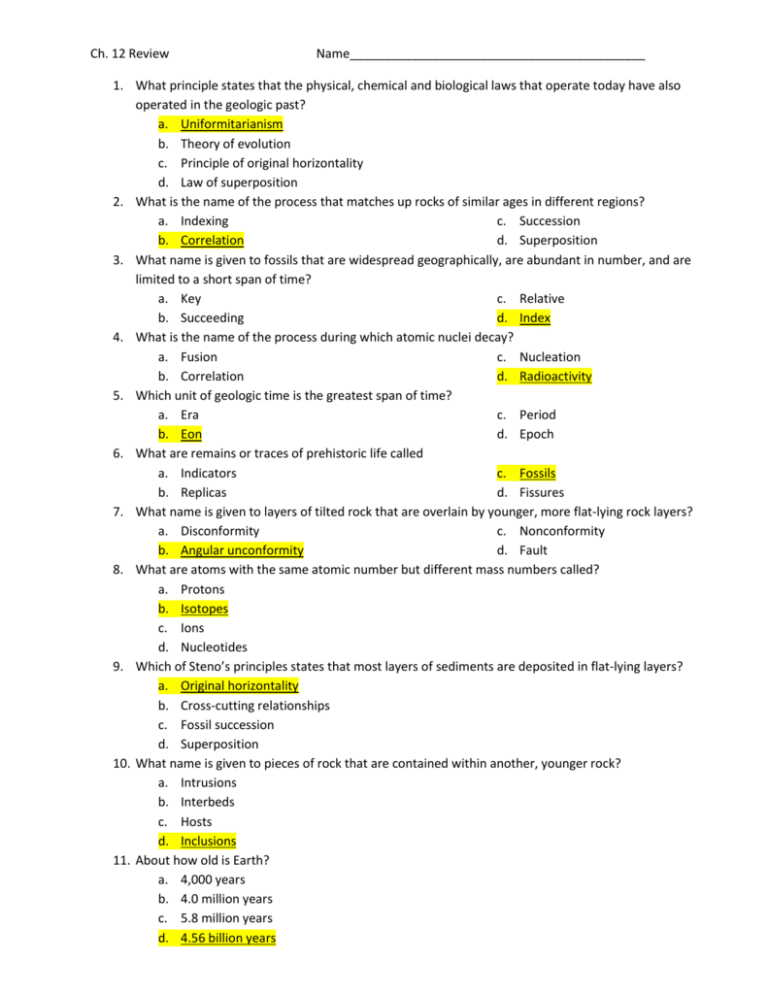
Ch. 12 Review Name___________________________________________ 1. What principle states that the physical, chemical and biological laws that operate today have also operated in the geologic past? a. Uniformitarianism b. Theory of evolution c. Principle of original horizontality d. Law of superposition 2. What is the name of the process that matches up rocks of similar ages in different regions? a. Indexing c. Succession b. Correlation d. Superposition 3. What name is given to fossils that are widespread geographically, are abundant in number, and are limited to a short span of time? a. Key c. Relative b. Succeeding d. Index 4. What is the name of the process during which atomic nuclei decay? a. Fusion c. Nucleation b. Correlation d. Radioactivity 5. Which unit of geologic time is the greatest span of time? a. Era c. Period b. Eon d. Epoch 6. What are remains or traces of prehistoric life called a. Indicators c. Fossils b. Replicas d. Fissures 7. What name is given to layers of tilted rock that are overlain by younger, more flat-lying rock layers? a. Disconformity c. Nonconformity b. Angular unconformity d. Fault 8. What are atoms with the same atomic number but different mass numbers called? a. Protons b. Isotopes c. Ions d. Nucleotides 9. Which of Steno’s principles states that most layers of sediments are deposited in flat-lying layers? a. Original horizontality b. Cross-cutting relationships c. Fossil succession d. Superposition 10. What name is given to pieces of rock that are contained within another, younger rock? a. Intrusions b. Interbeds c. Hosts d. Inclusions 11. About how old is Earth? a. 4,000 years b. 4.0 million years c. 5.8 million years d. 4.56 billion years Across 1. law of superposition 3. correlation 6. period 7. epoch 8. uniformitarianism 9. eon 10. half-life Down 7. era 2. unconformity 4. radiocarbon 5. index fossil
